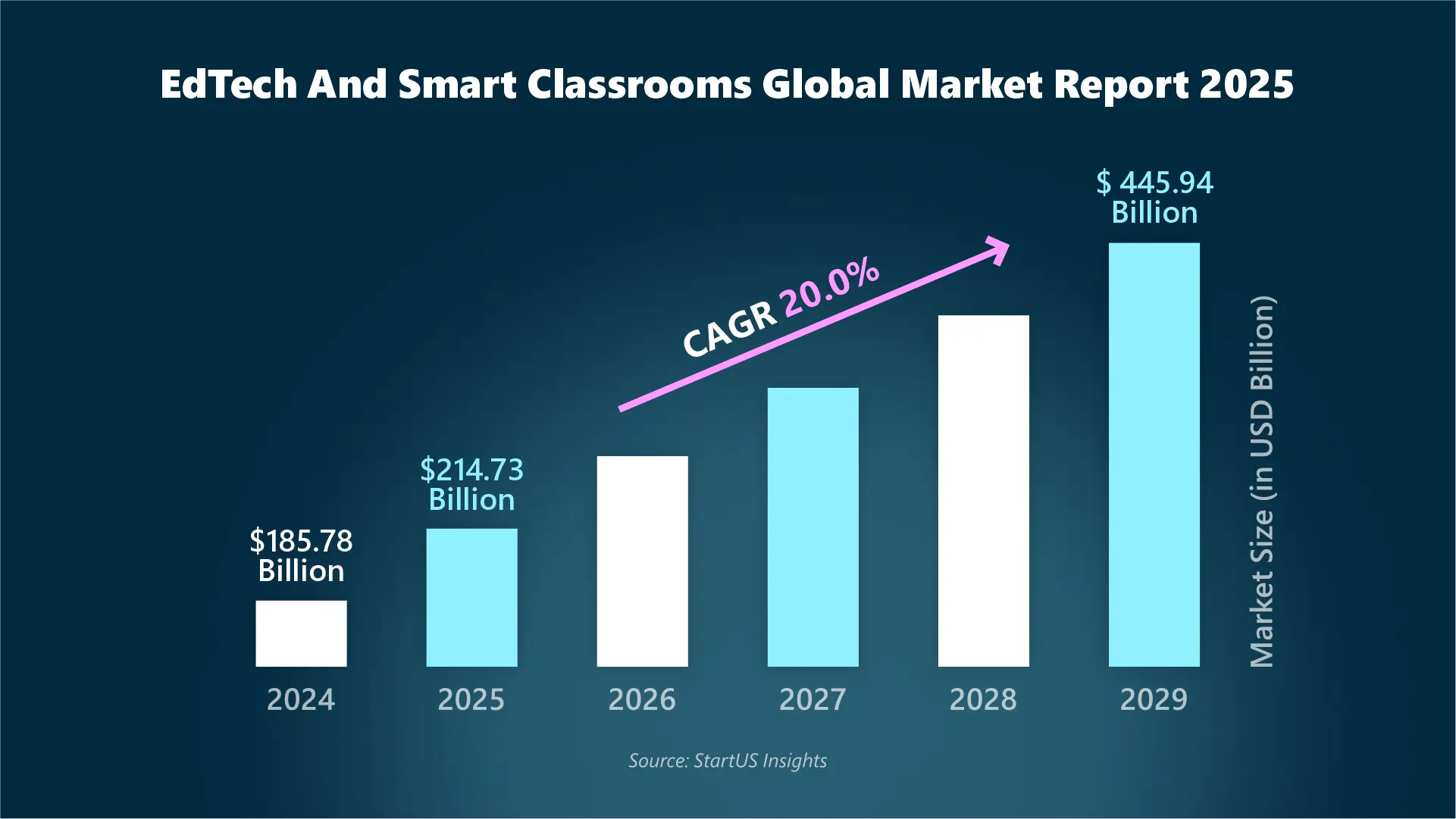Yes, we know artificial intelligence comes the first hint when talking about higher education evolutionary trends. But the global education industry is not limited to the external AI revolution to pivot the change. There’s more that does not meet the eye! Looking on the inside, the industry has been growing across dimensions, whether it concerns qualitative additions to the curriculum or the educational deployment ways. Keeping learners at the nuclei of the system, parent as well as teaching fraternity join hands to foster unfettered growth for the young minds, that are planning to just start out into the wide wide world.

The growing numbers at the market size graph can only promise the advent and advancements made in the industry, the core of deployment lies with the system and precisely the schools and educational institutions. As the depict above showcases a massive US$ 214.73 billion worth of the Edtech and smart classrooms global market size; it is poised to grow at a staggering 20% over the years to follow. This shall open doors for greater opportunities to learn effectively and gain massive scores at long-term retention as well.
Another fascinating evolutionary number reveal;

As AI continues to disrupt and reshape higher education, more institutions are recognizing the need to develop clear, cohesive AI strategies to stay ahead of the curve. In this dynamic environment, many innovative institutions are charting a path for others to follow in their adoption of Artificial Intelligence.
The following section caters to the foundational characteristics of advanced AI strategies in Higher Education.
- Differentiators- AI can help differentiate and innovate with specialized research datasets, unique degree programs, and distinctive learning experiences. Institutions can enhance their competitive edge and rive significant advancements in their areas of expertise.
- Guardrails- Creating guidelines for responsible use rather than strict governance; allows flexibility and innovation while ensuring ethical use, preventing institutions from pre-emptively restricting the campus community from leveraging AI to its full potential.
- Collaborative Communities- Working groups or communities where faculty, staff, and students can share best practices, collaborate on projects, and learn from each other is crucial.
- Vendor Partnerships- Partnering with diverse set of technology vendors with advanced AI capabilities and offerings helps institutions access breakthrough AI tools and expertise.
- Change Management and Training- Offering ongoing comprehensive training programs will ensure that all stakeholders, at all levels of the institution, are comfortable and proficient with AI tools.
- Leadership- Effective AI leadership necessitates both top-down buy-in and investment from institutional leaders; as well as bottom-up, grassroots innovation to build a culture of AI innovation.
Strategic Recommendations for Future Academic Leaders
- Ensure AI investments are aligned with the institution’s broader strategic vision
- Democratize access to diverse AI tool by ensuring all students, faculty, and staff- have access to AI resources; promoting equity
- Institutions must curate and adopt flexible and an iterative approach to AI Implementation, allowing for quick pivots and adjustments based on what works and what does not
- Have a long-term strategic vision for AI to guide decision-making and institutional AI goals resonance
- Establishing clear metrics shall help in measuring AI Initiatives success and make data-drive decisions
- Allocate adequate resources for AI initiatives for necessary infrastructure and ongoing support to maintain and scale AI solutions
- Prioritize privacy and security with implementation of data protection measures, AI systems, and ensure compliance
International Use Cases of Microsoft Copilot in Education
- At Miami Dade College; leaders implemented AI-powered assistants through Microsoft Copilot Studio; leading to a 15% increase in pass rates and a 12% decrease in dropout rates
- Institutions including Oregon State University, Auburn University, and the University of Tennessee, Knoxville are employing Microsoft Security Copilot and their students in their security operations centers (SOCs) to combat cyber crime
- Singapore Management University (SMU) has deployed Microsoft Security Copilot to increase efficiency, decrease response times, and yield greater automation in containment efforts
- Macquarie University developed Virtual Peer- an AI-powered chatbot to provide students with real-time around-the-clock academic and administrative support
The journey of integrating Artificial Intelligence into higher education is both transformative and complex. Succeeding in the age of AI is not just about technology, it is about equipping faculty, staff, and students with the tools, skills, and resources to use the technology to advance their work precision. Therefore, greater emphasis on human-AI collaboration-elevating the role of humans so that people and technology are working together and leveraging their respective strengths to achieve greater outcomes; must be the leading priority for institutional leaders. Because education today is not just about textbooks; it involves technology and the world around. Amping up your AI capabilities as an educational facilitator or a higher education leader is a must. Be the change-maker while ringing in the benefits of technology in the education now!

